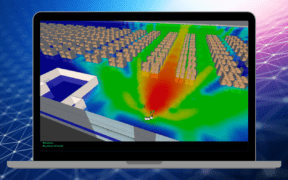Category: LTE

The design prediction accuracy report is one of many reports featured in iBwave Design, a leading RF planning and design tool for indoor wireless systems. This report compares RF coverage prediction versus measured data at a venue. In this blog, we’ll explain what the numbers in the report mean, how they should be interpreted, and […]

The energy and utility sectors occupy a unique position in the global landscape, serving as the bedrock of national infrastructures while demanding unparalleled levels of communication reliability, security, and uptime. These industries, encompassing everything from electricity and gas distribution to renewable energy generation, are characterized by critical requirements that necessitate robust communication networks. Amidst this […]

Designing wireless networks for stadiums (and for mass events in general) presents unique challenges and opportunities. As network traffic surges during events, it’s essential to ensure that users experience seamless connectivity. This blog will delve into the critical aspects of stadium network design, exploring the intricacies of cell deployment, throughput optimization, and practical strategies for […]
